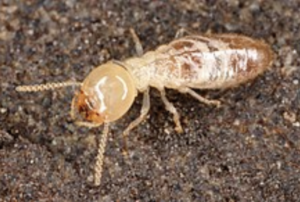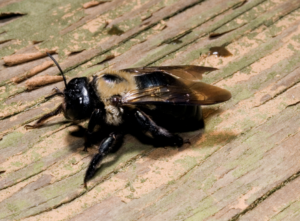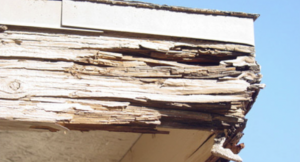What is a WDO Inspection?
Home-buyers will often ask “what is a WDO inspection?”. WDO stands for Wood-Destroying Organisms. These are pests that can cause serious problems in the wooden structural components of a home. That’s why an infestation may go unnoticed until the damage is already extensive. Control measures include preventing insect entry by sealing holes and cracks and hiring a professional to apply chemicals for remedial treatment. The most common types of destructive insects are termites and ants.
Termites
 Subterranean termites are the most damaging insects of wood. Their presence is often hard to notice, and damage usually is found before the termites are seen. You should take measures to prevent infestations, which may require hiring a pest-control service.
Subterranean termites are the most damaging insects of wood. Their presence is often hard to notice, and damage usually is found before the termites are seen. You should take measures to prevent infestations, which may require hiring a pest-control service.
If you see the following signs in your house, you might have termites:
- Frass or Sawdust-like Droppings which result from the insect’s tunneling activities
- Dirt or Mud-like Tubes or Trails on various parts of the home’s structure such as wooden support members, plumbing pipes, or foundation
- Exit Holes with Dirt at drywall/sheetrock
- Damaged Wood Members such as window sills, trim, framing
- Swarming, Winged Insects within the home, especially in the spring or fall
Carpenter Bees
Carpenter bees resemble bumblebees, but typically have a shiny, hairless abdomen (bumblebees usually have a hairy abdomen with black and yellow stripes. The carpenter bees also have different nesting habits. Bumblebees nest in an existing cavity often underground (abandoned rodent burrows), whereas carpenter bees tunnel into wood to lay their eggs.
The carpenter bee is so-called because of where it chooses to make its home. They are solitary bees and are not part of a larger hive community. Instead, they burrow into soft woods, such as the siding of a house, to live in and lay larvae. The female carpenter bee is the one who makes the hole by chewing through the wood.
Wood-Decaying Fungus
Wood-destroying fungus or fungi causes more damage to structures than all the fires, floods, and termites combined! Wood decaying fungus requires four fundamentals to survive which are oxygen, favorable temperatures, water, and food. Fungus occurs generally when the moisture content of wood exceeds 20 to 30 percent, coupled with optimal temperatures (32 ̊ – 90 ̊ F), an adequate supply of oxygen and a suitable source of energy and nutrients.
There are several different kinds of fungus including White Rot Fungi, Brown Rot Fungi, and Soft Rot Fungi.

Water is the enemy of wood! Moisture control must be an integral part of any plan designed for the prevention of wood decay fungi.
The following guidelines are a good way to start:
- Make sure all wood in contact with the ground is pressure treated
- Posts, piers and framing members should always be placed on concrete footers above the surrounding soil level
- Guttering should carry all roof run-off water 2 to 6 feet away from the structure
- Monitor all visible wood for signs of moisture retention, damage or intrusion, & correct the conditions
- Ventilation of crawlspaces is critical to prevent “dead air” spaces
- Adequate cross-ventilation beneath the structure will minimize “dead air” spaces
- Install crawlspace vents at a minimum of two square feet per opening for every 25 linear feet of wall
- Avoid any obstructions of the crawlspace vents by vegetation, storage or physically sealing off openings
Tips to Avoid Expensive Repairs
- In crawlspaces with continuously moist soil, a vapor barrier can be installed to minimize condensation onto framing components. Vapor barriers are designed to maintain the moisture at the soil level
- Use pressure treated wood properly, or select heartwood (redwood, cedar) or non-wood composite materials if moisture conditions are unavoidable (decks, wood in ground contact, etc.)
- Borate treatment by a licensed professional will protect wood from decay
- Repair plumbing leaks immediately
- Clear rain gutters and downspouts of debris regularly
- Repair roof leaks immediately
- Maintain all exterior wood surfaces sealed with a water repellent paint or stain
- Maintain all interior wood window sills sealed with a water repellent paint or stain since condensation is common around windows
- Keep all commodes secured tightly to the floor to minimize possible leakage at the seal
- Periodic inspections should be part of a routine maintenance schedule
The Importance of a WDO Inspection
Regular inspections of your home are an important part of home maintenance. Having a Home Inspector look for wood-destroying insects and organisms can alert you to possible infestations in the wooden structural components of your home – – a serious problem that often goes undetected for a long time and can cause major damage to your home.
The home inspector will thoroughly, visually inspect the exterior and interior of the home top to bottom inside and out. They know what to look for and where to look for the most common types of evidence of wood-destroying organisms.
Call Home Run Inspections today for your WDO inspection!
Home Run Inspections, LLC
Oklahoma: 405-905-9175
We Cover All the Bases!
Serving the Oklahoma City metro and surrounding areas including Edmond, Yukon, Piedmont, Bethany, El Reno, Tuttle, Mustang, Moore, Norman, Midwest City, Del City, Choctaw, McCloud, Shawnee, Harrah, Newalla, Jones, and more.
Schedule Your Inspections Online at:
Like us on FaceBook
Follow us on Twitter
Follow us on Instagram

